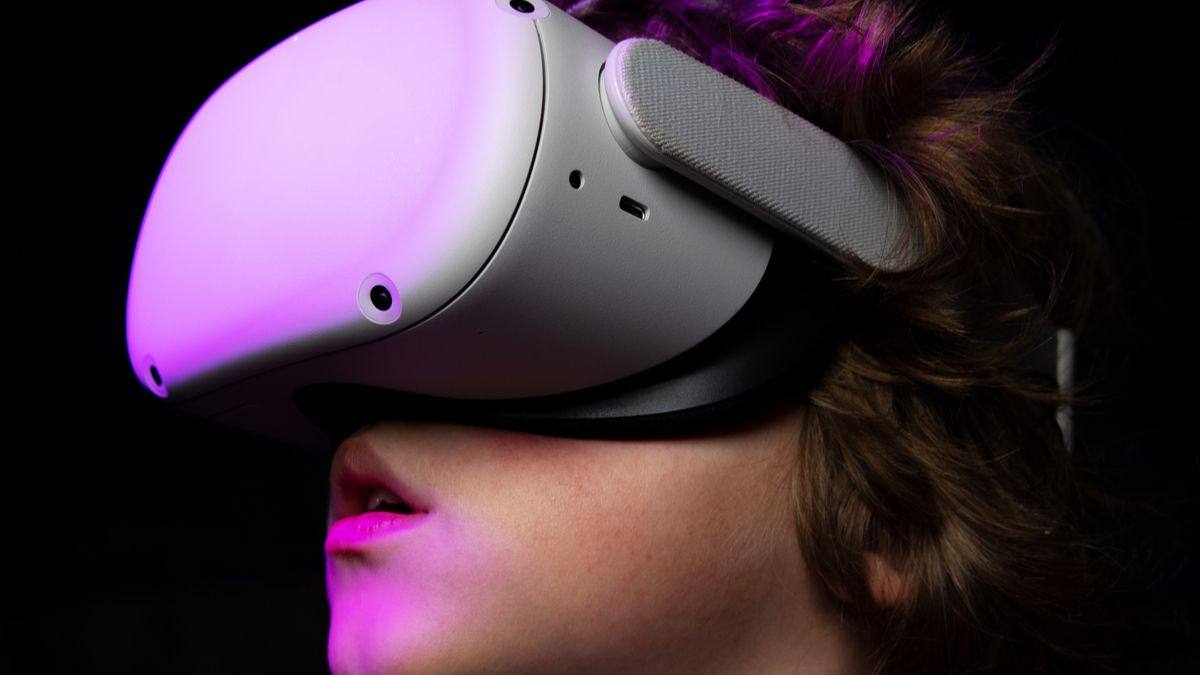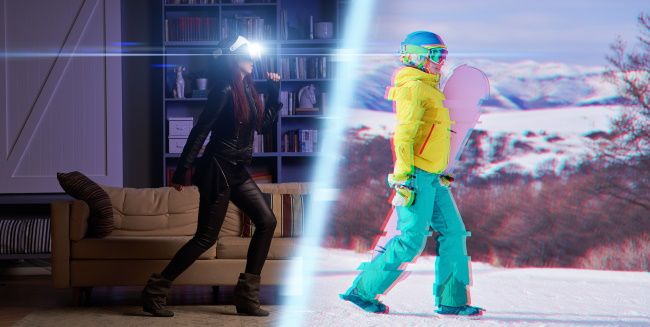
Exploring the Concept of Immersion in VR - Its Essential Value Explained

Exploring the Concept of Immersion in VR - Its Essential Value Explained
Quick Links
- VR Presence Defined
- Our Brains Construct Reality
- How VR Tricks Your Brain Into Feeling Present
- Presence Is a Persistent Challenge
Modern virtual reality’s big breakthrough was the ability to create “presence,” a feeling of being in a place other than where you are. Achieving presence was a long and difficult process, but it’s the secret sauce that makes modern VR magical.
VR Presence Defined
You may not think about it too much (which is a good thing) but consider the place you are right now. Whether it’s at your desk, in a park, or anywhere else you might find yourself on a given day, you don’t question whether you’re really there, right? You feel physically present and accept the reality of it at a subconscious level.
That’s exactly what VR creators want to achieve with the experiences they design. For VR to be compelling, your brain needs to accept the virtual world as real. At least to the extent that you’re actually there, not that the things you’re seeing are necessarily real, which is another discussion.
“Presence” is something that’s hard to put into words, but as an experience it’s unmistakable. It’s like looking at a 3D “magic eye “ picture that suddenly snaps into focus. It’s a result of subconscious processes that are part of the way your senses and brain construct your reality.
Our Brains Construct Reality
This raises an interesting fact about how we perceive the real world. Which is to say, we don’t really do that. The world you perceive around you and the feeling of being present that’s part and parcel of it isn’t the real world at all. Sure, it’s based on the real world, but what you perceive is a reconstruction of reality. You don’t even live in real-time! Since sensory processing takes time to happen, your perceptions are always a few milliseconds behind whatever actually happened in the world around you.
It’s also not a one-way process. Our previous experiences and knowledge of the world affect what things look like to us. A brain has limited capacity, so it’s always trying to take shortcuts, which includes fudging the details of what we perceive based on what we’ve seen or experienced before.
We can even lose our sense of presence in real life, which is one of the major symptoms found in psychological dissociation - a detachment from reality.
This is good news for VR creators, however, since we know that our brains generate a sense of presence based on what our sensory organs are currently reporting and our past expectations and experiences. So, in theory, all you have to do is present the brain with the right sensory inputs and design your VR experience so it doesn’t violate the user’s expectations of reality. Well, at least not by accident.
How VR Tricks Your Brain Into Feeling Present

While that sounds easy on paper, the real challenge was figuring out what exactly your brain needs before that feeling of presence is triggered. The pioneering work that companies such as Oculus have done, along with years of academic research on VR and related areas has led to the point where a formula for presence more or less exists.
It turns out that you don’t have to 100% replicate the real world in order to trick the brain into feeling presence. With a few key requirements met, you can feel a sense of presence with an affordable headset (such as the Quest 2 ) and relatively simple graphics.
Related: The Oculus Quest 2 Is Great, and It’s the Future of VR
First, there’s the quality of tracking. That is, how the VR software tracks the physical position of your body in virtual space. Tracking has to be in all axes of 3D space. Also known as “6DoF” or six degrees of freedom. Tracking accuracy has to be within 1mm of your true position within 3D space. There can be no “jitter”, where the VR world jumps between slightly different positions, causing the image to shake. A stable image is essential. You also need this accurate tracking in a relatively large and comfortable amount of space.
Perhaps one of the most important requirements for presence is low latency. In other words, the VR world must react to your movements so quickly that it feels like real-time. According to John Carmack, a key technologist in the development of modern VR, 20ms of motion-to-photon latency is the dividing line for presence. This means that from where you initiate a movement to where the photons reflecting that movement in the VR world hit your retinas can take no longer than 20ms.
Image quality matters, too, but not in terms of rendering fidelity or quality. Instead, a low-persistence display that combat’s flat-panel blur and at least a 90Hz refresh rate are important factors in making presence possible. The physical resolution of the screens also needs to be high enough that the user’s eyes can’t see the pixel structure of the display. Finally, the horizontal field of view has to be 90-degrees or wider.
Related: How Important Are Refresh Rates in VR?
This isn’t a comprehensive laundry list of requirements for presence, but they are the most important ones. Achieving all of this is something as compact as a modern VR headset like the Oculus Quest 2 is a miracle of engineering!
Presence Is a Persistent Challenge
While VR engineers and researchers have cracked the code when it comes to minimum presence requirements, that doesn’t mean there isn’t a lot of work left to do . There’s plenty of scope to enrich the sensory experience of VR. Better haptics and adding sensory input for smell and taste are some examples. Making headsets less obtrusive and offering a complete field of view is also high on the list of goals for VR development. VR has finally brought a sense of presence to the table, but it’s early days yet.
Also read:
- [New] Crafting the Perfect Tone Accessible Software for Effortless Vocal Transformation for 2024
- [Updated] In 2024, Ceased Shorts Missing on YouTube Screen
- [Updated] Navigating the World of Social Media with a Focused Brand
- 2024 Approved Fine-Tuning Your Frames with Videoleap
- 2024 Approved Hero5 Mastery A Comprehensive Guide to Photo and Video Excellence
- 2024 Approved Illustrator Tutorial Bringing Text to Life
- Exploring Metaverse Frontiers with Elite VR Equipment for 2024
- In 2024, Top 5 Multimedia Sensation Apps IPhone/Android Showdown
- YL Computing: Download Stunning Hyundai Nexo Wallpaper Collection - Powered by YL Software
- Title: Exploring the Concept of Immersion in VR - Its Essential Value Explained
- Author: Frank
- Created at : 2025-02-18 18:36:26
- Updated at : 2025-02-19 17:20:52
- Link: https://some-techniques.techidaily.com/exploring-the-concept-of-immersion-in-vr-its-essential-value-explained/
- License: This work is licensed under CC BY-NC-SA 4.0.